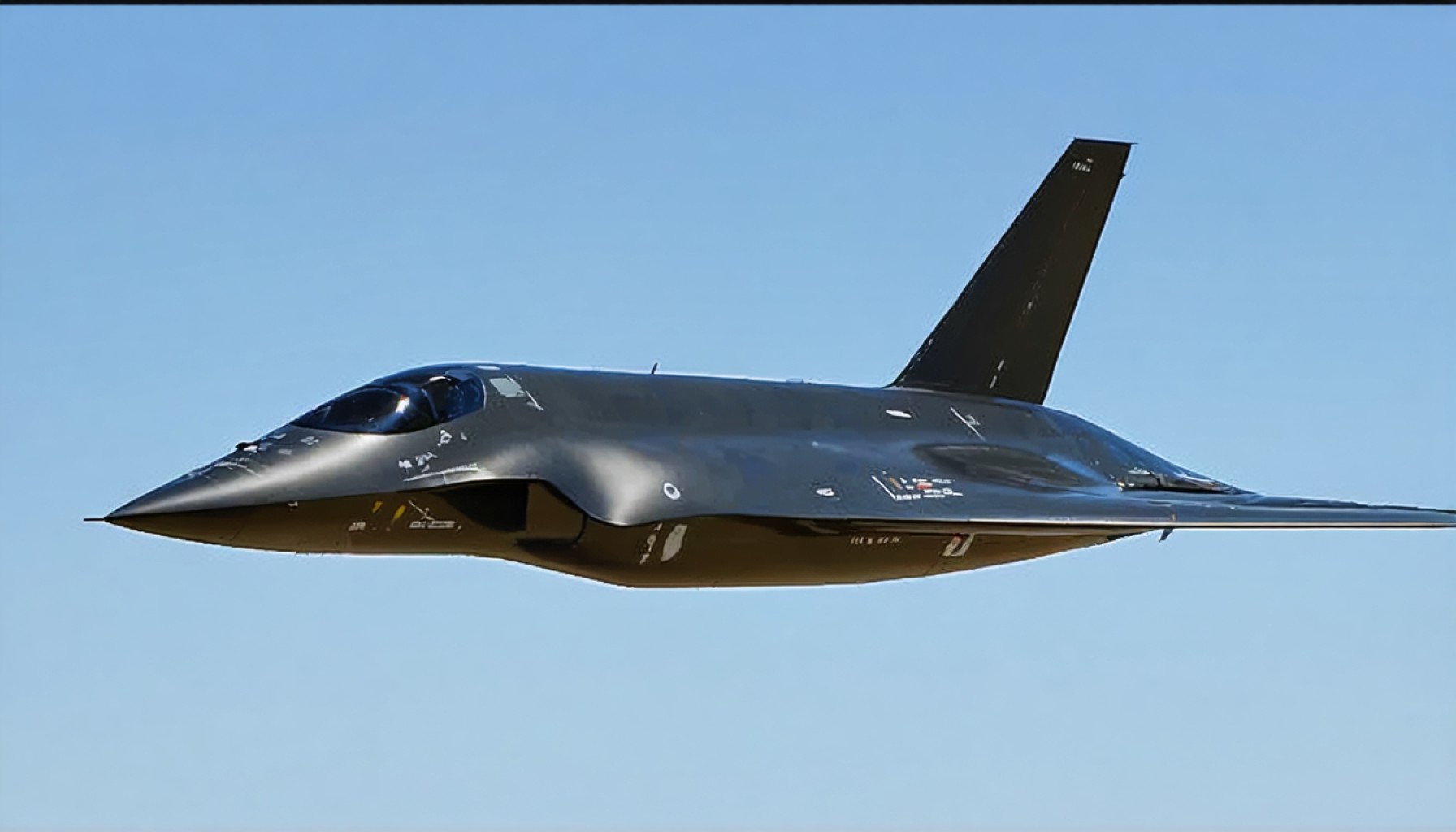- Hypersonic flight operates at speeds over Mach 5, encountering complex forces that challenge engineering limits.
- A University of Illinois team achieved the first 3D simulations of hypersonic airflows using the Frontera supercomputer.
- Led by Professor Deborah Levin, the research exposed unexpected disturbances in airflow at Mach 16, unlike the smooth patterns seen in 2D studies.
- The team used the triple-deck theory and Direct Simulation Monte Carlo method for more accurate predictions of flow behavior.
- Insights reveal gaps in shock layers at high speeds and promise advancements in aircraft design, enhancing safety and reliability.
- This research could revolutionize hypersonic travel, bringing practical and routine travel closer to reality.
Hypersonic flight, moving faster than a speeding bullet at speeds over Mach 5, is an engineering marvel that dances on the edge of possibility. As these vehicles slash through the atmosphere, they encounter a whirlwind of unpredictable forces—shock waves and turbulent flows that can transform orderly movement into chaotic energy. Traditionally, our understanding of these phenomena has been confined to the flat surface of 2D observations. However, a pioneering team at the University of Illinois Urbana-Champaign has shattered this two-dimensional barrier.
Led by the visionary Professor Deborah Levin, the research team—using the formidable Frontera supercomputer—achieved the first-ever 3D simulations of hypersonic airflows around rudimentary cone shapes. This seemingly simple geometric form represents the diverse array of hypersonic vehicles slicing through our skies. The results from these 3D simulations were startling: established notions of smooth, concentric flow patterns dissolved, replaced by a revelation of unexpected disturbances and breaks.
These insights came to life at the ferocious speed of Mach 16, where air molecules thicken and collide violently near the cone’s surface—revealing gaps in the shock layers previously masked in traditional studies. Yet at a calmer speed of Mach 6, these disruptions remained elusive, highlighting how the sheer velocity of hypersonic travel governs instability.
The team’s leap from hypothesis to certainty hinged on performing a complex dance of mathematical and computational gymnastics. By applying the intricate triple-deck theory, they crafted new software to validate their simulation results. In this digital symphony of calculation, the disruptions materialized clearly, including the profound 180-degree periodicity that wrapped around the cone like an echo of disorder.
Taking it further, the researchers employed the Direct Simulation Monte Carlo method—a taxing, but rewarding process that traces billions of individual air molecules as they careen and clash. These detailed visualizations promise more accurate predictions of hypersonic flow behavior, marking a pivotal advance toward designing safer, more reliable aircraft capable of withstanding these punishing speeds.
This groundbreaking research promises to revolutionize hypersonic flight, illuminating the hidden dynamics that could lead to safer, more efficient designs. It is a significant step in our ongoing quest to conquer the skies at speeds once considered mere fantasy. As we continue to push the envelope, each insight we gain in the hidden intricacies of fluid dynamics propels us closer to the dream of practical, routine hypersonic travel.
Unlocking Hypersonic Secrets: New 3D Insights and Future Implications
A Deep Dive into Hypersonic Flight Breakthroughs
Hypersonic flight, defined as travel at speeds over Mach 5, represents a pinnacle of modern engineering, constantly challenging our understanding of aerodynamics and materials. The recent advances by the University of Illinois Urbana-Champaign’s research team, led by Professor Deborah Levin, herald a new era of hypersonic exploration. By leveraging the Frontera supercomputer, they broke the two-dimensional constraints, unveiling the chaotic complexities of airflow in three dimensions. Here, we expand on these advancements and delve into their practical implications, controversies, and future directions.
How 3D Simulations Revolutionize Our Understanding
Traditionally, hypersonic simulations relied on two-dimensional models that often oversimplified the turbulent flows and shock waves encountered at these high speeds. The groundbreaking 3D simulations:
– Dispelled the notion of smooth flow patterns, instead uncovering unpredictable disturbances and breaks, especially evident at Mach 16.
– Utilized the Direct Simulation Monte Carlo method to offer a granular view of air molecule interactions, paving the way for precise flow behavior predictions.
Real-World Use Cases: Implications for Aerospace Engineering
These insights are vital for developing next-generation hypersonic vehicles. Aerospace engineers can now:
1. Design Safer Structures: With a clearer understanding of airflow disturbances, structural integrity can be enhanced to withstand high-speed stresses.
2. Improve Fuel Efficiency: Understanding shock interaction can lead to more streamlined designs, reducing drag and saving fuel.
Market Forecasts & Industry Trends
The global hypersonic market is poised for significant growth, driven by both military and commercial interests. According to a report by [MarketWatch](https://www.marketwatch.com), the hypersonic technology market is expected to reach $15 billion by 2030, with a CAGR of over 8%. Innovations like those from the University of Illinois will likely accelerate this trend.
Controversies & Limitations in Hypersonic Research
Despite these breakthroughs, challenges remain:
– Signal Interference: High speeds can cause radio and GPS signals to become unreliable, complicating navigation.
– Material Limitations: Current materials struggle to withstand the intense heat and pressure at hypersonic speeds, necessitating further materials science research.
Actionable Recommendations for Aerospace Professionals
1. Embrace Advanced Simulations: Integrate 3D simulation tools into design processes for more accurate modeling of hypersonic conditions.
2. Focus on Material Innovation: Invest in research for heat-resistant materials to endure the harsh hypersonic environment.
Pros & Cons Overview
Pros:
– Enhanced understanding of hypersonic airflow dynamics.
– Potential to reduce aerodynamic drag and improve vehicle efficiency.
– Opens new avenues for both military and commercial applications.
Cons:
– High computational and resource demands of 3D simulations.
– Persistent challenges in material science and signal interference.
Concluding Insights
The work by Professor Levin’s team signifies a pivotal moment in hypersonic research, propelling us closer to practical applications and routine travel at extraordinary speeds. As the hypersonic industry evolves, maintaining a focus on innovation and safety will be crucial for achieving the full potential of this transformative technology.
Keywords: Hypersonic flight, 3D simulations, aerospace engineering, hypersonic market trends, material innovation
Discover more about hypersonic advancements and research from NASA.
